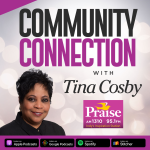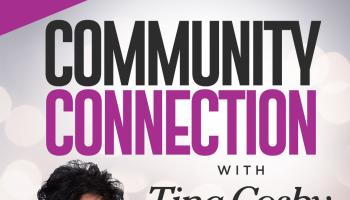Tamara Vaughn spends hours a day on the Web, Googling random facts and updating her Facebook status.
Until recently, though, all of that typing was done not from a computer connected to a broadband network, but from a high-end cell phone.
“The phone works with easier access (to the Web),” said Vaughn, 25. “The laptop? Mainly the screen is just bigger.”
Vaughn, who is African-American and lives on the Near Westside, is just as much of an Internet user as the suburbanites who own multiple computers and pay $50 a month for home broadband service.
What it means to be an Internet user, at least according to researchers, is changing rapidly as gadget makers continue to flood the market with Web-capable mobile devices such as smartphones, netbooks and tablets such as the Apple iPad.
And when those mobile devices are taken into account, national statistics show that African-Americans access the Internet almost as much as whites do — narrowing, at least from a technology standpoint, a digital divide that for years fell along racial lines.
Today, the division of who has ready access to broadband is more about socioeconomic status than race.
“Since the first survey in 2000, race and ethnicity have become increasingly less important predictors of Internet use,” said Lee Rainie, director of the Pew Internet & American Life Project, which studies how the Web affects society. “In 2000, race alone was a predictor.”
African-Americans are now the nation’s most active users of the mobile Web, according to recent studies by Pew.
Nearly 60 percent of blacks have used a cell phone, netbook, game console or other hand-held device to get online. Just 54 percent of whites have done so, according to the study by Pew, which was conducted over a month in 2009.
In a typical day, 35 percent of blacks who own a cell phone use it to connect to the Web, compared with 20 percent of whites.
Conversely, 59 percent of whites use a computer to access the Web during a typical day, compared with 45 percent of blacks. When access to the mobile Web is added into the mix, those statistics jump to 61 percent for whites and 54 percent for blacks.
Local statistics are harder to come by, but research indicates similar trends are happening in Central Indiana.
Why this is happening, no one knows for sure. But there are theories:

The cost. Phones, netbooks and Web-capable music players such as the iPod Touch cost hundreds of dollars, but they’re cheaper than springing for a $1,000 laptop.
“The technology is changing and evolving so fast, and prices are dropping so fast, that it will ultimately yield more access,” said Shelley Stern, central region community outreach director for Microsoft.
The convenience factor of having a phone and Internet access in the same device.
There are even cultural explanations, with researchers pointing out that downloadable features on cell phones, such as ringtones, were more popular with African-Americans and other minorities first.
But beyond the questions about why this is happening, there are larger questions about what it means.
Are smartphones and netbooks used on the go really a substitute for desktop or laptop computers tied to a home broadband connection? And even if more people can access the Web, does it matter if they’re not using it to improve their lives?
Is the digital divide really about technology, or is it about knowing what to do with the technology?
There are no clear answers.
“A meaningful understanding of the digital divide goes well beyond the question of access to computers and Internet,” said Mikyung Baek, a research and technical associate at the Kirwan Institute. “Just because you have access to computers and Internet does not mean you are capable of utilizing the technology to your benefit.”
The institute, a Columbus, Ohio-based think tank that studies race and ethnicity, is doing research into how technology training — or the lack of it — affects how people use the Web. Or whether they choose to use it at all.
Pew says 50 percent of Americans choose not to have broadband at home because they just aren’t interested, are too busy or think the Internet is a waste of time. That’s far more than the 19 percent who cite cost as the main reason for not subscribing and the 17 percent who say broadband isn’t available in their area.
Stern, however, is hopeful.
As a leader of Microsoft’s efforts to provide cash and software to underserved communities, Stern said she’s noticed more community-based empowerment efforts to help train people how to use the Internet for job hunting, e-mail and writing resumes. In Indianapolis, for example, the Urban League provides such services.
“That’s where the power comes in,” she said.
Technology is only part of the equation, and it’s becoming an increasingly small part.
In addition to the proliferation of Web-capable mobile devices, Americans — especially low-income and black Americans — have been subscribing to home broadband services in record numbers.
Nationally, 52 percent of African-Americans had broadband at home in December, compared with 63 percent of Americans overall. For African-Americans, that’s up from 43 percent in 2008, according to Pew.
Locally, the numbers are harder to pinpoint, but at least 62 percent of blacks in Central Indiana have broadband, compared with 68 percent of whites, according to Scarborough Research.
Low-income Americans of all races — those with household incomes of less than $30,000 — reported a 34 percent growth in home broadband adoption from 2008 to 2009, according to Pew. But for many people, surfing the Web on their cell phone is good enough.
Smartphones, and certainly netbooks, allow users to do everything from streaming videos and social networking to sending e-mail and typing documents. And with more advanced devices on the way, such as the iPad tablet, and faster cellular networks in the works, the line between mobile device and computer is likely to become even more blurred.
But there is still a stark difference when it comes to software. A student, for example, probably wouldn’t be able to survive with an iPhone alone.
That’s what pushed Vaughn to finally put down her touch-screen Motorola Droid smartphone, buy a laptop and ask her cable company to add broadband to her bundle.
“If I wasn’t thinking about going back to school, I probably wouldn’t have gotten the Internet.”
Local statistics are harder to come by, but research indicates similar trends are happening in Central Indiana.Why this is happening, no one knows for sure. But there are theories:
The cost. Phones, netbooks and Web-capable music players such as the iPod Touch cost hundreds of dollars, but they’re cheaper than springing for a $1,000 laptop.”The technology is changing and evolving so fast, and prices are dropping so fast, that it will ultimately yield more access,” said Shelley Stern, central region community outreach director for Microsoft.
The convenience factor of having a phone and Internet access in the same device.
There are even cultural explanations, with researchers pointing out that downloadable features on cell phones, such as ringtones, were more popular with African-Americans and other minorities first.
But beyond the questions about why this is happening, there are larger questions about what it means.
Are smartphones and netbooks used on the go really a substitute for desktop or laptop computers tied to a home broadband connection? And even if more people can access the Web, does it matter if they’re not using it to improve their lives?
Is the digital divide really about technology, or is it about knowing what to do with the technology?
There are no clear answers.
“A meaningful understanding of the digital divide goes well beyond the question of access to computers and Internet,” said Mikyung Baek, a research and technical associate at the Kirwan Institute. “Just because you have access to computers and Internet does not mean you are capable of utilizing the technology to your benefit.”
The institute, a Columbus, Ohio-based think tank that studies race and ethnicity, is doing research into how technology training — or the lack of it — affects how people use the Web. Or whether they choose to use it at all.
Pew says 50 percent of Americans choose not to have broadband at home because they just aren’t interested, are too busy or think the Internet is a waste of time. That’s far more than the 19 percent who cite cost as the main reason for not subscribing and the 17 percent who say broadband isn’t available in their area.














